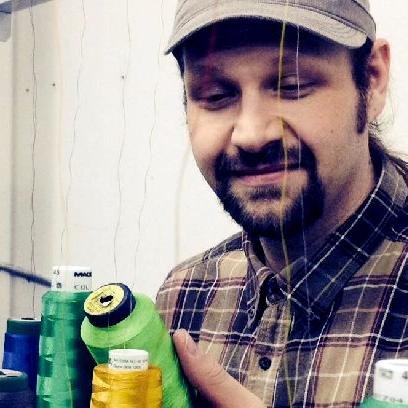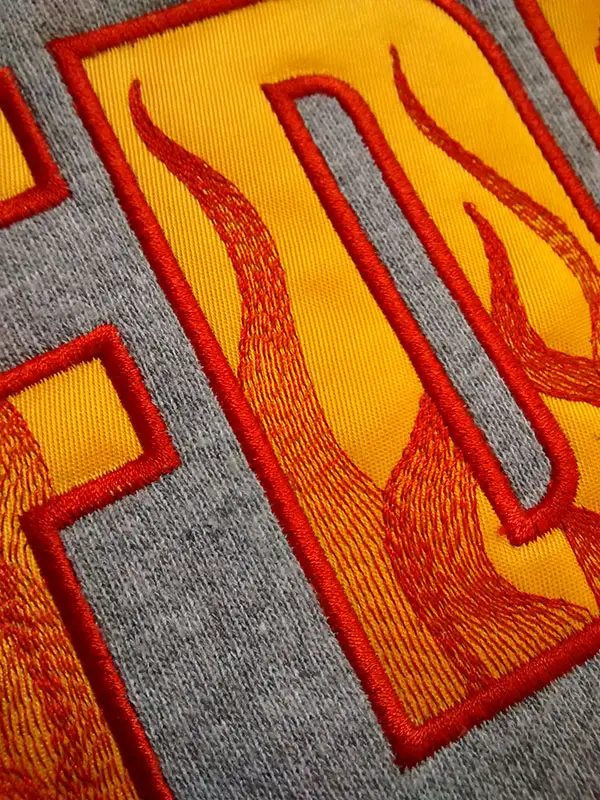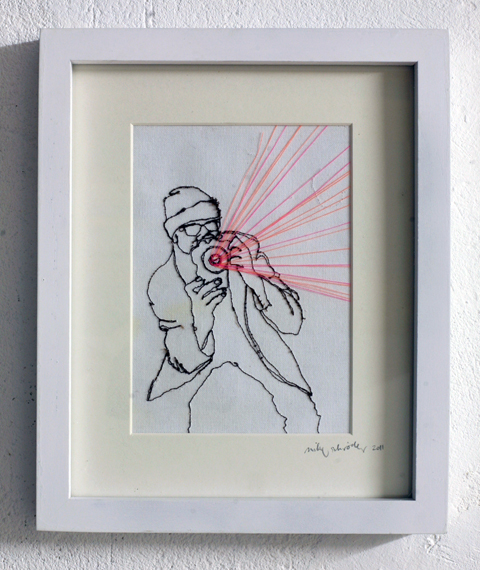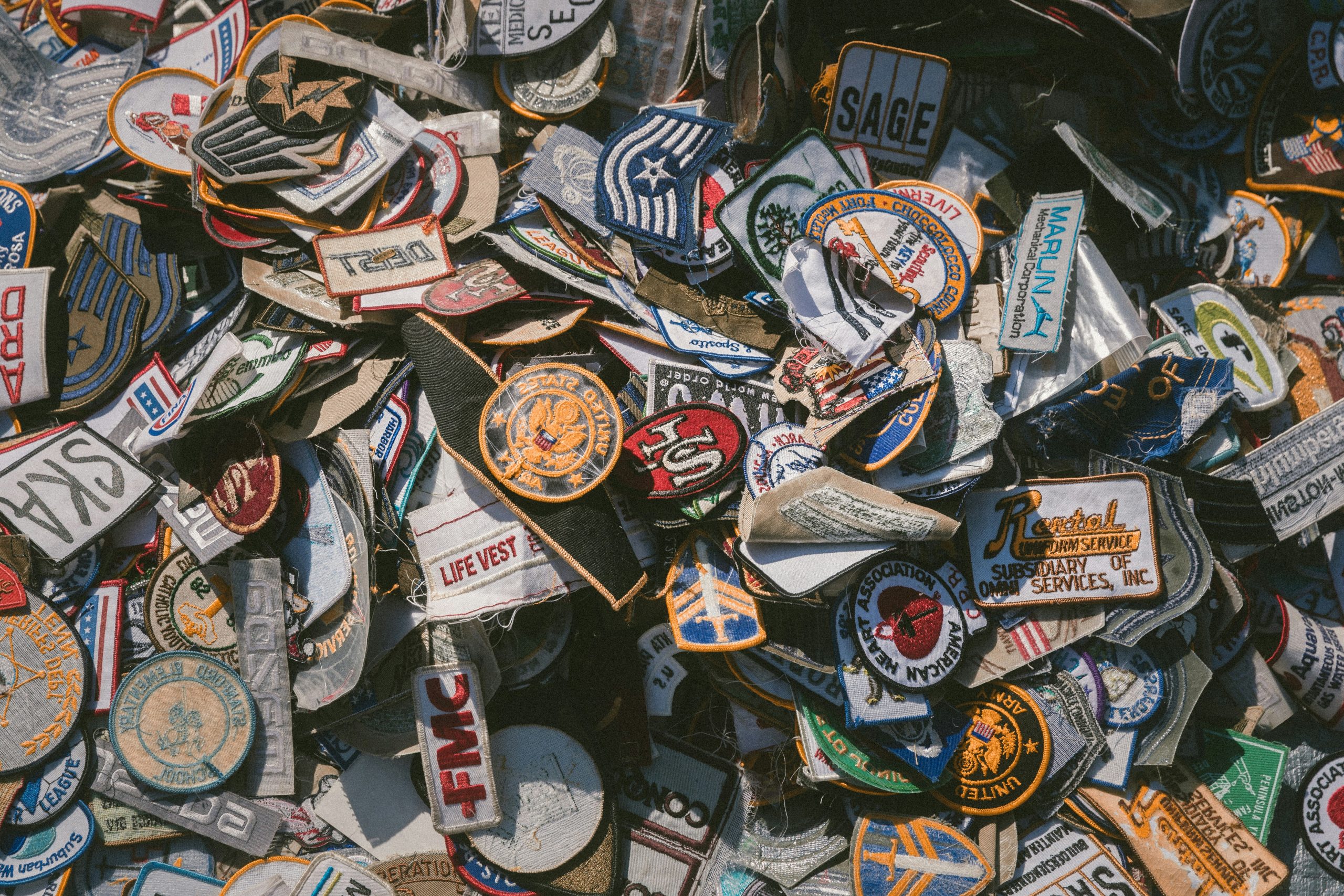All careers have their stressful moments, but whenever my stint in the commercial embroidery world has me facing off with a nonplussed co-worker, I’ll often try to back down the frantic tone of the conversation, jokingly asserting ‘Hey, we’re not exactly saving the world here. We make clothes pretty.” While it may be somewhat true, those who know me best know that I actually take machine embroidery rather seriously, even that of the commercial and sometimes wholly corporate variety. When pressed, I might even say it’s one of the most important things a creative person can do; we take clothing- that which is physically closest to us and which stands as the first glimpse a viewer can get of who we are – and decorate it in ways that declare our affiliations and even our ideals. We make it possible to wear our figurative ‘hearts’ literally on our sleeves.
If you’ve read my bio anywhere, you’ll know that I started digitizing in 2000, coming into my own as a productive professional in the year that followed. It’s this timing, and a tremendous set of coincidences that makes sense both of my strong feelings about embroidery and the reason that this day every year gives me cause for reflection. It’s not surprising for any person from the U.S. who was alive and aware at the time to discuss their relationship to the tragic events of September 11th, 2001; personally, I did not know anyone lost in the attacks, nor was I present in the places that suffered them. That said, they did a great deal to shape my career; through our connections with people in the garment industry on the east cost, the company for which I digitized embroidery designs, located in my hometown of Albuquerque, New Mexico, a company nearly 2000 miles from New York City, inexplicably became the chief licensed decorator to produce garments for FDNY (the New York Fire Department).

I found it hard to process then; creating designs in the wake of a tragedy of that magnitude. Nattering over stitches and thread colors seemed strange, and having my livelihood come from work born from loss and pain was intensely dissatisfying at times. But in the end, it was the reception of those designs that solidified in me the importance of what we do. I can’t tell you the number of thankful messages we received from people who were actually doing the work that was easy to call important- first responders and cleanup crews, people on the ground. They were thanking us for decorating garments from the safety of our shop. It was hard to believe, but I finally understood just how important it was to those people that we gave them this means to identify with each other and visibly show their support.

I’ve always been a proponent of open self-expression and consider clothing to be one of the most personal canvases for that ‘speech’, but it wasn’t until I saw the way people thought of those garments my company made in that fraught time that I understood how a simple stitched design could mean so much to someone who was trying to make sense of things and to reestablish some sense of themselves and their place in the world amid chaos. Though I might have been a bit precious about embroidery, placing it much like some thread-based version of the press in the list of ways one should be able to express one’s self freely, it was in seeing how people used these simple garments to support each other, to show solidarity, and to find some way to be a part of something bigger than themselves that I understood just how much effect it could have.
Though our stitches won’t save lives like those of a surgeon; they may deeply affect the feelings of those who wear or see them. We make designs that commemorate triumph and loss, that express belonging, that protest wrongs, and that display experiences and deeply held beliefs. We help people display important messages about who they are and who they want to be. We create heirlooms that may well ‘live’ beyond us, that we may never fully understand, but that are critical to those who need them most. No matter how conflicted I might have been at the time, I’ve used the 15 years since to help a great many people tell their stories through stitches and I’ve learned that ‘pretty clothes’ can mean a great deal indeed.
If you’d like to read my entire rumination on the subject, you can find it at my website here.
—–
 Erich Campbell is an award-winning machine embroidery digitizer and designer and a decorated apparel industry expert, frequently contributing articles and interviews to embroidery industry magazines such as Printwear, Stitches, and Wearables as well as a host of blogs, social media groups, and other industry resources.
Erich Campbell is an award-winning machine embroidery digitizer and designer and a decorated apparel industry expert, frequently contributing articles and interviews to embroidery industry magazines such as Printwear, Stitches, and Wearables as well as a host of blogs, social media groups, and other industry resources.
Erich is an evangelist for the craft, a stitch-obsessed embroidery believer, and firmly holds to constant, lifelong learning and the free exchange of technique and experience through conversations with his fellow embroiderers. A small collection of his original stock designs can be found at The Only Stitch




